Conservazione Sicura degli Alimenti per Bambini nel Frigorifero: Cosa Ogni Genitore Deve Sapere
Quando si tratta di nutrire il proprio bambino, nulla è più importante della sicurezza. Dalla scelta degli ingredienti giusti alla preparazione di pasti sani, ogni passo conta. Ma un aspetto che i genitori spesso trascurano è come vengono conservati gli alimenti per bambini nel frigorifero. Una corretta conservazione aiuta a mantenere la freschezza, prevenire la crescita di batteri e preservare i nutrienti essenziali. In questa guida, ti illustreremo i principali consigli di sicurezza per conservare il cibo del tuo bambino in frigorifero e come l’elettrodomestico giusto, come il Frigorifero a Gas SMAD, può fare davvero la differenza.
Perché la Conservazione degli Alimenti per Bambini è Importante
I bambini hanno un sistema immunitario in via di sviluppo, il che li rende più vulnerabili alle malattie trasmesse dagli alimenti. Un cibo conservato in modo scorretto può ospitare batteri dannosi come la Salmonella o l’E. coli, mettendo a rischio la salute del tuo piccolo. Garantire condizioni di conservazione corrette è il modo migliore per mantenerlo sicuro e in salute.
Temperature Ideali del Frigorifero
Il primo passo è assicurarsi che il frigorifero sia alla giusta temperatura. La temperatura consigliata per gli alimenti per bambini è compresa tra 0°C e 4°C (32°F – 39°F). Temperature più alte possono favorire una rapida proliferazione dei batteri. Un termometro da frigorifero è un ottimo investimento per controllare regolarmente se l’elettrodomestico mantiene questo intervallo sicuro.
Pratiche Sicure di Conservazione degli Alimenti per Bambini
1. Conservare in Piccole Porzioni
Dividi sempre le pappe fatte in casa o i pasti cotti in piccoli contenitori monoporzione. Questo evita di riscaldare e raffreddare ripetutamente il cibo, riducendo il rischio di crescita batterica.
2. Usare Contenitori Ermetici
Vasetti di vetro o contenitori in plastica senza BPA con coperchi ben chiusi sono i migliori. Le confezioni ermetiche prevengono la contaminazione e proteggono dagli odori del frigorifero.
3. Etichettare e Datare Tutto
Scrivi sempre la data di preparazione su ogni contenitore. Gli alimenti per bambini fatti in casa devono essere consumati entro 48 ore se refrigerati. Per una conservazione più lunga, considera il congelamento.
4. Evitare la Porta del Frigo
La porta del frigorifero è la parte più calda a causa delle frequenti aperture. Conserva gli alimenti per bambini sui ripiani centrali o superiori, dove le temperature sono più stabili.
5. Separare dai Cibi Crudi
Non conservare mai gli alimenti per bambini vicino a carne cruda, pesce o verdure non lavate. Questi possono rilasciare batteri che potrebbero contaminare i pasti del tuo piccolo.
Congelare gli Alimenti per una Conservazione più Lunga
Se desideri cucinare in grandi quantità, il congelamento è la scelta migliore. La maggior parte delle pappe e degli alimenti adatti ai bambini si congela bene. Usa vaschette per ghiaccio o stampi in silicone per creare piccole porzioni, quindi trasferiscile in sacchetti da congelatore. Etichetta ogni sacchetto con la data e consuma entro 3 mesi per mantenere la qualità.
Scongelare e Riscaldare in Sicurezza
Scongela gli alimenti per bambini in frigorifero durante la notte o metti i contenitori in acqua tiepida.
Evita di scongelare a temperatura ambiente, che favorisce la crescita batterica.
Riscalda accuratamente il cibo fino a renderlo bollente, quindi lascialo raffreddare prima di darlo al bambino.
Non ricongelare mai alimenti già scongelati.
Come il Frigorifero Giusto aiuta: Il Frigorifero a Gas SMAD
La conservazione sicura degli alimenti per bambini non riguarda solo le tecniche, ma anche l’affidabilità del frigorifero. Il Frigorifero a Gas SMAD è progettato per garantire un raffreddamento costante, anche in situazioni off-grid o a bassa disponibilità di energia. Che tu viva in un camper, in una baita o che ti serva semplicemente un apparecchio affidabile a casa, questo frigorifero assicura temperature stabili per mantenere gli alimenti del tuo bambino freschi e sicuri.
Con caratteristiche come raffreddamento efficiente, funzionamento silenzioso e flessibilità energetica (funzionando sia a gas che a elettricità), il Frigorifero a Gas SMAD offre ai genitori la tranquillità di sapere che i pasti del loro bambino sono conservati nelle migliori condizioni.
Conclusione
Conservare correttamente gli alimenti per bambini non è solo una questione di praticità, ma significa proteggere la salute del tuo bambino. Seguendo pratiche di conservazione sicure, monitorando le temperature del frigorifero e utilizzando un elettrodomestico affidabile come il Frigorifero a Gas SMAD, puoi garantire che il tuo piccolo abbia pasti freschi e nutrienti ogni giorno.
Perché quando si tratta del tuo bambino, solo il meglio è abbastanza.

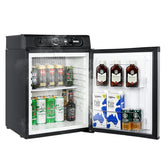
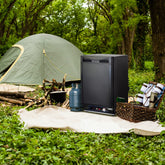
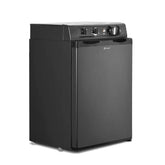
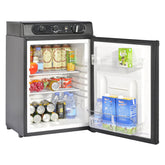
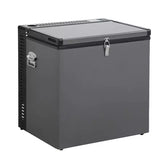
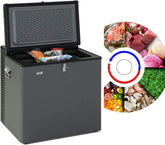
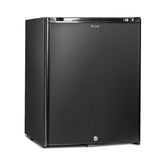
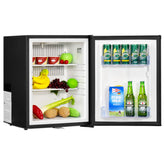
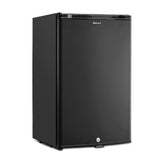
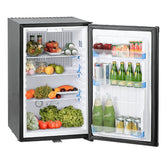


Lascia un commento
Si prega di notare che, prima di essere pubblicati, i commenti devono essere approvati.